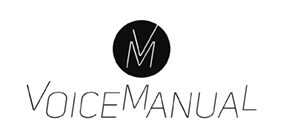Vocal improvisation means free vocalization that is created freely in the moment. The whole potential of vocal improvisation can be released if the improvisation is anchored into five different aspects during singing. In this context we are borrowing a term anchoring used in Neuro-Linguistic Programming (NLP).
According to the NLP WORLD website, “Anchoring in neuro-linguistic programming is a term used for the process by which you apply a gesture, touch or sound at the peak of a state, either in oneself or someone else. The said anchored state can then be recalled or re-activated by reapplying the gesture, touch or sound.”
We see that the term can also be used in scatting; anchoring into different musical aspects while doing vocal improvisation. When we feel strong, or anchored, in each musical aspect mentioned below, moving around freely as the improvisation requests is easier and scatting will not feel insecure. Each aspect of vocal improvisation has its own anchor. In order to be founded steadily in each anchor a lot of practice is needed.
1. Anchoring Into Rhythm
Anchoring into the rhythmic aspect starts with feeling and sensing the pulse and the groove of the song. For instance, singing a swinging jazz standard requests for anchoring in swing phrasing. When established in this, it is equally essential to be able to move in and out of this groove in order to create tension through laid-back, for instance. Accenting is also a central part of jazz expression.
Being anchored in the rhythm also includes different triplets, changes in time signatures and syncopation, for example.
2. Anchoring Into Melody
The melody anchor is established when the singer knows the melody of the song throughout. This makes it possible for the singer to vary the melody and the rhythmics while being anchored in the melody line at the same time. It is also beneficial to learn to understand the relation between each note and the harmony or chord that is being played.
3. Anchoring Into Harmony
Being anchored in the harmony requires that the singer is constantly aware of the relationship between each chord and the sung note. Learning to improvise or move around during one single chord will take any improviser far. It is essential to recognize which tonal degrees create tension, and which resolve it.
4. Voice Technique – Anchoring Into Vocal Flexibility
In order for the singer to be able to move freely in the whole vocal range as the improvisation requires, it is beneficial if the voice technique allows the singer to be vocally versatile and flexible. In this contexct vocal flexibility means that moving from one pitch to another is easy, fast and precise. Many kinds of ways to use the voice can be heard in scat singing.
5. Intuition – Anchoring Into The Subconscious
The seamless cooperation of the four former aspects is crowned by intuition, if the scat artist is brave enough to give their talents to it. Diligent practice is necessary in order to be established in all of the music-mental anchors. However, they lose their value if they are not being given the opportunity to unite in mutual cooperation.
In addition, intuition conceals the boldness to be allowed to be taken away by the artistic expression as it requires – without fear or embarrassment. It is musician’s job to anchor stronly into each aspect, after which the talents gained through diligent practice are handed over to improvisation.
The anchors mentioned above can be used to guide one’s journey with practising jazz improvisation. Looking for a capable jazz musician to teach these aspects is recommended. An experienced improvisor will no longer notice the effects of the aspects mentioned in this article, as their cooperation has become seamless and automatic.

